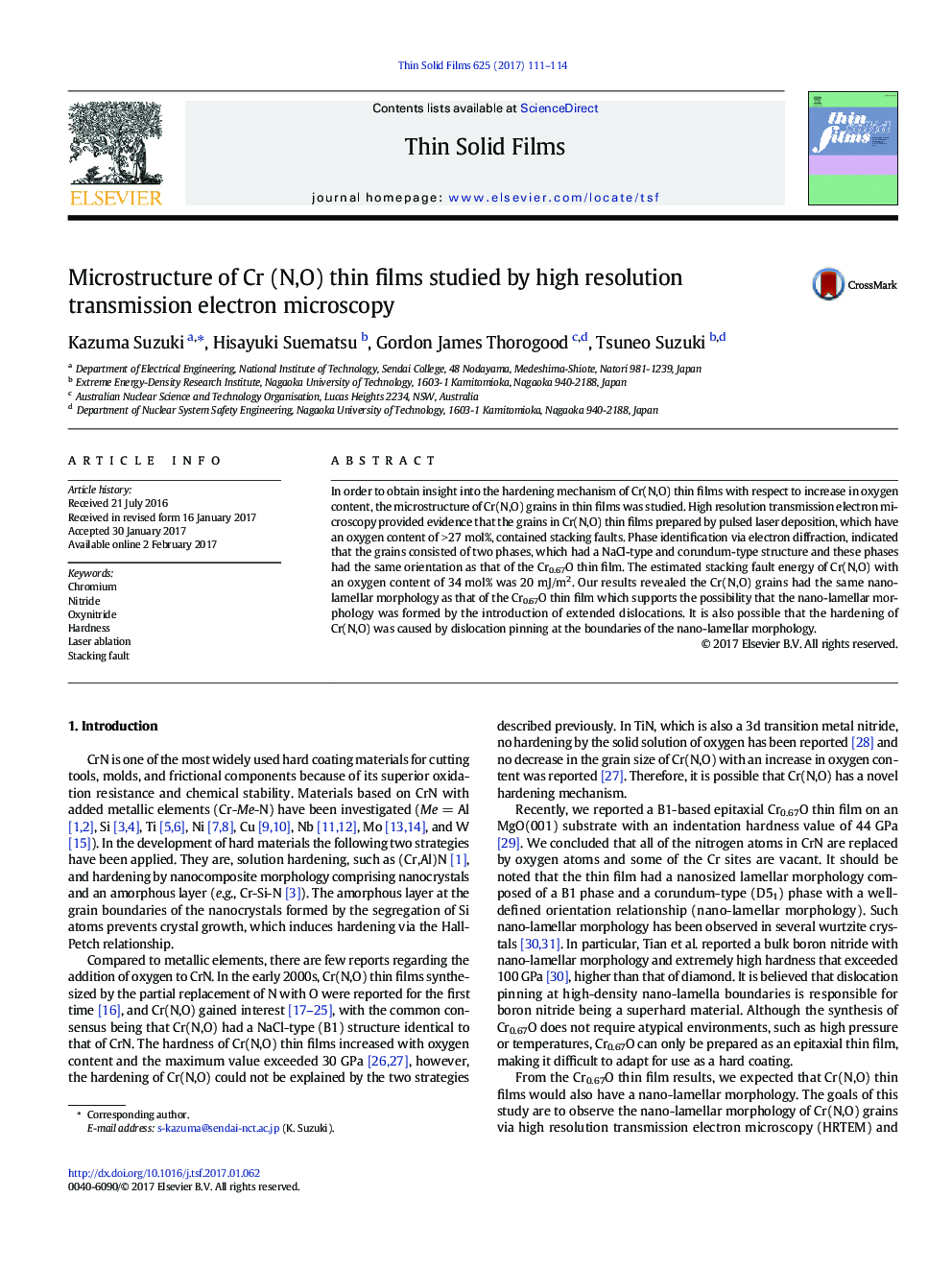| Article ID | Journal | Published Year | Pages | File Type |
|---|---|---|---|---|
| 5466310 | Thin Solid Films | 2017 | 4 Pages |
Abstract
In order to obtain insight into the hardening mechanism of Cr(N,O) thin films with respect to increase in oxygen content, the microstructure of Cr(N,O) grains in thin films was studied. High resolution transmission electron microscopy provided evidence that the grains in Cr(N,O) thin films prepared by pulsed laser deposition, which have an oxygen content of >Â 27Â mol%, contained stacking faults. Phase identification via electron diffraction, indicated that the grains consisted of two phases, which had a NaCl-type and corundum-type structure and these phases had the same orientation as that of the Cr0.67O thin film. The estimated stacking fault energy of Cr(N,O) with an oxygen content of 34Â mol% was 20Â mJ/m2. Our results revealed the Cr(N,O) grains had the same nano-lamellar morphology as that of the Cr0.67O thin film which supports the possibility that the nano-lamellar morphology was formed by the introduction of extended dislocations. It is also possible that the hardening of Cr(N,O) was caused by dislocation pinning at the boundaries of the nano-lamellar morphology.
Related Topics
Physical Sciences and Engineering
Materials Science
Nanotechnology
Authors
Kazuma Suzuki, Hisayuki Suematsu, Gordon James Thorogood, Tsuneo Suzuki,
